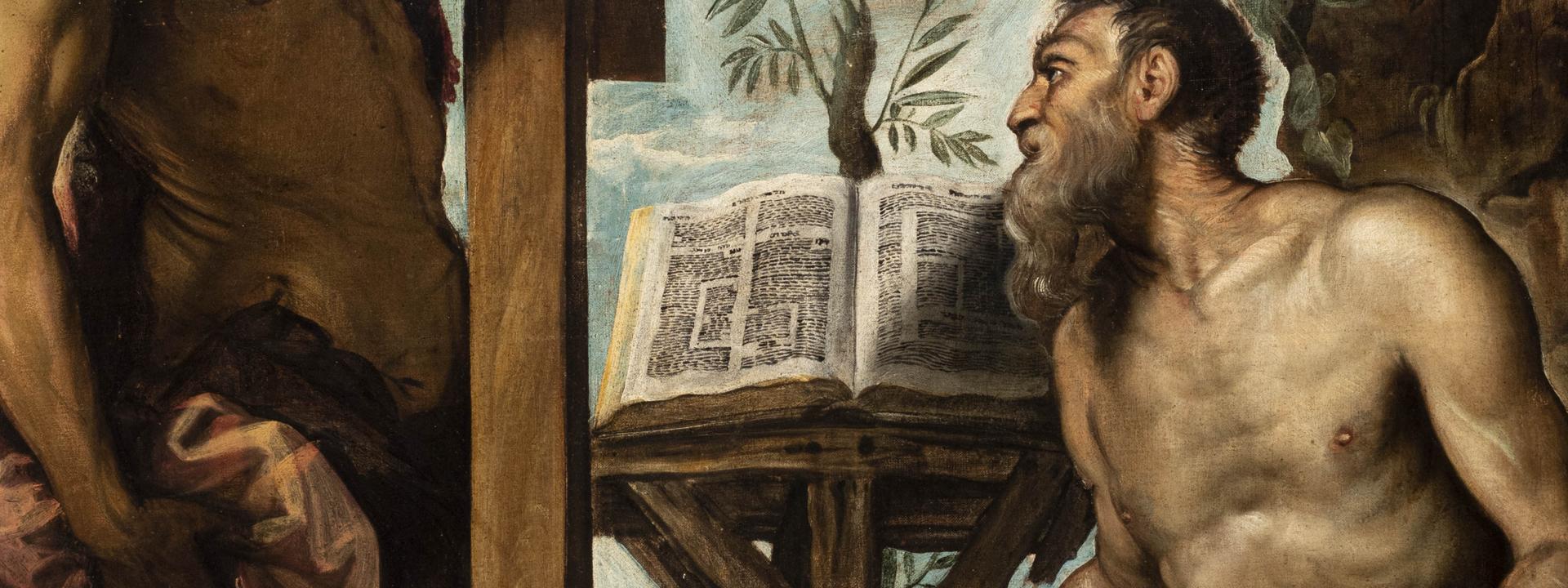The painting comes from the Palazzo dei Camerlenghi, headquarters of the financial magistrature and the heart of the economic life of the Serenissima, which assumed its current form under the doge Andrea Gritti between 1525 and 1528. The decorative apparatus of the administrative offices in the palazzo were, along with that of the Palazzo Ducale, one of the most imposing public decorative undertakings of the time. It was traditional that the patricians appointed to positions in the magistrature whose offices were in the palazzo would celebrate their appointment by allocating a painting depicting their patron saint and their family coat of arms. Their term of office (16 months) and each family’s coat of arms are therefore important reference points that help in dating the paintings.
Considering that Faggin, in a 1963 article on the decoration of the Camerlenghi, put forward the very reasonable hypothesis that paintings were executed when the magistrates started their appointment or during their 16 months’ service rather than when they left their post, as was generally believed, the year when this painting was executed could well be 1551, as it was commissioned by the magistrates Andrea Dandolo and Girolamo Bernardo, who left their posts on 6 September 1552 and 9 October 1552, respectively.
The model introduced by Veronese, in charge of the decorations for the Camerlenghi for the entire 1530s and ‘40s, was taken up by Tintoretto, who then profoundly renewed it by cancelling the background landscape and creating a space that is almost devoid of any reference point except for the arid plateau the figures are placed on. The large, transversally rendered cross placed between the nude, athletic bodies of the two saints creates the optical illusion of an extraordinarily profound space. The architecture of the bodies, invested by a clear, midday light, is magniloquent in its formal insistence on the Michelangeloesque musculature and pathos-charged gesturality.




